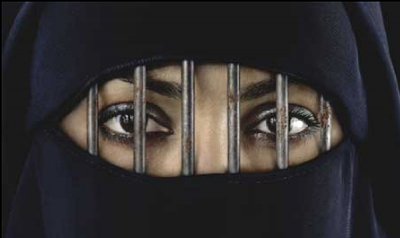
Do you remember one reason Washington gave for invading Afghanistan in 2001? It was to liberate women. Watching pictures of ill-treated Afghan women, previously uncommitted Americans heartily joined the cry for war. (No possibility of doing that in Saudi Arabia. Or Egypt. Since no good friend of America would suffer that kind of liberation.)
Hidden from war headlines are hundreds of millions of women from Japan to the USA fighting for justice within their legal system, for parity in media portrayals, for equality in the office, and for respect in their own homes and bedrooms. They include Arab –or if you prefer, Muslim—women. And don’t forget Christian and Buddhist, Jewish and Hindi and Shinto. Even non-believers shouldn’t be excluded? (You might ignore Ms. Twakkol Karman, Yemen’s Nobel Peace Laureate because presently she and her people are being besieged and bombed by American ally Saudi Arabia.)
Anyway, Egyptian women seem to receive an excess of attention. Maybe it’s because they’re so numerous– half of Egypt’s 80 million– or because they’re so glittery, or perhaps because Egyptian feminists are especially outspoken and creative, or because Egypt has a vigorous literary and film industry that takes on issues with boldness and skill. A powerful film emerging from this trade is Yousry Nasrallah’s 2009 feature “Scheherazade: Tell Me a Story”. It’s playing again in New York, double-billed with a new release, “Before and After the Spring Revolution”.http://nyadiff.org/adiff-ny-2015-egypt-before-after-spring-revolution/. Both films explore the lives of women.
The “Before and After” film, a documentary by a European team directed by Alexandra Schneider, focuses on four individuals during the 2011 revolt, and later. Schneider revisits Cairo to learn the fate of each of them following the ouster of the elected Muslim Brotherhood-led government and the re-imposition of a military dictatorship. “Scheherazade” is a fictional tale set in modern (pre Arab-Spring) Cairo, the work of two men, the renowned director Nasrallah and writer Wahid Hamed, and some very fine actors.
Schneider’s documentary will seem more credible because we know these are real people with apartments and neighbors. But both films are bigger-than-life dramas. “Scheherazade”’s four women are no less credible; indeed the scriptwriter says this story was inspired by true events. The central character here is Hebba, a TV host and a modern woman recently married to a seemingly progressive man. Confronting her nation’s social realities, journalist Hebba decides to profile three women on her show and in the course of these interviews exposes widespread misogyny and corruption at high levels. Her truth-telling goes too far, upsetting her husband’s career, and when she finds herself a victim of abuse, Hebba emerges more determined. She enters the debate with her own personal experience.
Schneider chose four Cairo activists for “Before and After the Spring Revolution”. Each woman is struggling for recognition and for freedom, some in her local community, others within the national campaign to oust a corrupt government and install a true democracy. The filmmaker caught them at a promising time in their careers when each exhibits a thrilling confidence on camera…at first. Their candor is extraordinary and Schneider makes us really care about each woman. When the filmmaker revisits Cairo after the restoration of military rule, two of these women are unavailable; one has vanished and another rebuffs the director.
Fictionalized or documented, both films portray a slice of the multifarious life of contemporary Egypt– portraits of “women who fight back”. All the women here will touch you and provoke you. South Asian, African and Arab women are already deeply engaged in the ‘challenges’ portrayed here. But Western women may only grasp these characters as unfortunate products of exotic, troubled places. (I hope not.) If we are honest, we in the US and Europe can recognize that we share a great deal with the eight women we meet through these films.
Today the women’s movement globally is weak and fragmented, fragmented by culture and war, and by class. Western women’s patronizing narrative of Third World women has alienated many; this applies especially to their view of Muslim women. If western audiences see the women in these films as only Egyptian, or only Muslim, the gulf between us will grow wider. And the value of such films will be lost.
Source Article from http://www.globalresearch.ca/egypt-before-and-after-the-spring-revolution-portraits-of-women-who-fight-back/5493391
Related posts:
Views: 0
 RSS Feed
RSS Feed
















 December 4th, 2015
December 4th, 2015  Awake Goy
Awake Goy 
 Posted in
Posted in  Tags:
Tags: 
















